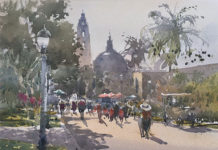
Plein air watercolor artist Stewart White has a background in illustration and design, which shows in his paintings and his teachings. The following is a Q&A with him on the benefits of travel for artists, the use of edges in a painting, and thoughts on planning a plein air piece.
You teach workshops abroad. As a painter, what is the benefit of travel for you and your work? How do you see it benefit your students?
I think the senses are most alert when put in unfamiliar surroundings. The lack of the familiar opens up awareness of new insights. Students are in the throes of the excitement of exploration which is an ideal learning environment.
It also tends to bond a class to the shared experience of travel and cooperation, especially in travel-related challenges. In a world where global branding makes for an homogenous environment, it’s good to get away to other parts of the world. I’ve seen good paintings of a parking lot of a Kroger’s grocery but a small medieval village in Southern France would be my preference for a classroom.
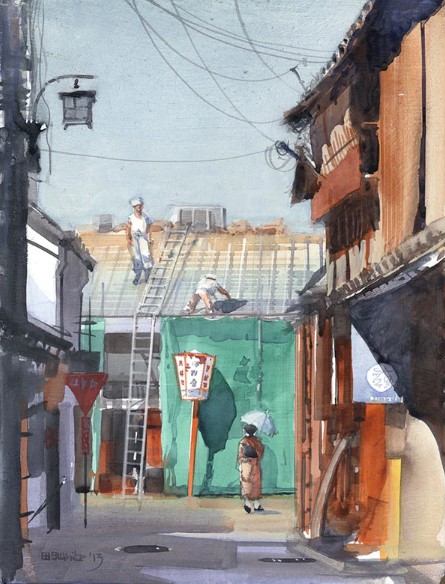
Why is working in plein air important to you as an artist? What does painting plein air give you that working from a reference photo does not?
In plein air painting, the student experiences the passing of time, the air temperature, the environmental smells and sounds absent from just the visual information present in a photo. A changing shadow can highly improve a design that was not initially conceived. The eye is more subtle to nuance than most cameras are and it’s in a state of alert observation during a painting session. While painting plein air, certain events might take place that can change the narrative that a photograph would miss.
Working in plein air can be overwhelming. How do you break down the information on-site?
The student must stand for something by establishing a focal point, an idea, or a theme. They need to edit information to serve the greater idea. This is a skill required of every artist. The art of simplification and editing are the key disciplines learned in outdoor observation. The craft of painting comes by the desire to honor those observations as effectively as possible.
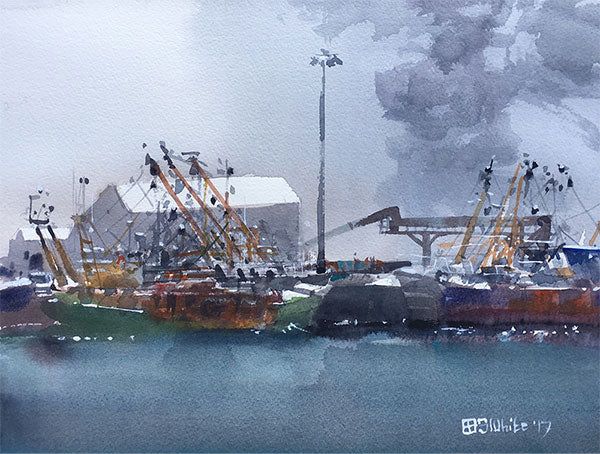
Can you address the importance of planning a painting?
Planning does two things. It helps the artist avoid “getting trapped.” By that I mean, there are times that one cannot go back and fix hastily painted areas of work. Light areas and clean washes need to be laid down with confidence that comes from having a good plan and preparation.
Secondly, planning can result from doing small “dress rehearsals” in a 6×8 square or even a postage stamp-sized sketch. That is where revisions and cautions can be discovered prior to executing the final work and measures can be taken to avoid calamity.
Without planning there is a lack of focus, a lack of light, and a lack of idea development.
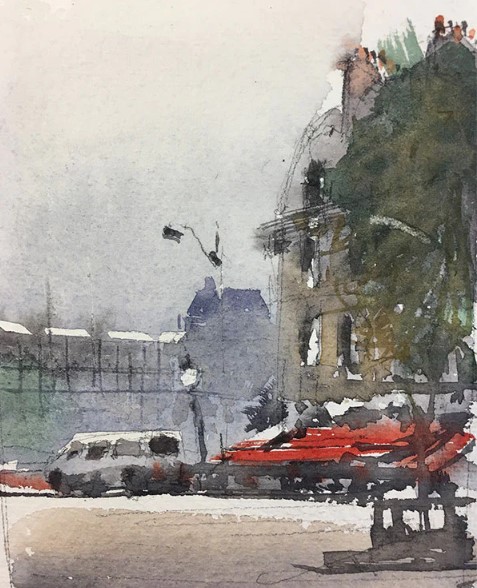
There seems to be a sense of play in your paintings between soft edges and hard edges. How do you decide what will be a soft edge vs hard edge?
Edges create depth in a picture. They recede or come forward depending on the quality of their edges. Edges in a shadow compete with the depth of that shadow. The fewer edges within a shadow, the more focus is given to the light that that shadow expresses.
In watercolor planning your edges are key. When transitioning from shade to shade or color to color, soft edges can delight the eyes with the effects it can create. The student must PLAN for opportunities to exploit this wonderful quality of the medium. Lost and found edges are one of watercolors strong suits. The range of depth is as striking as a strong dry stroke of color on a soft wash and the subtle haziness of trees in a distant fog. Chinese scroll painting, besides its mastery of mark-making with the brush is best known for the illusions created by edge control.
The leap between beginner and intermediate is one that can take a fair amount of diligence. What does a beginning student need to master in order to make that step? Why?
When do you consider yourself no longer a beginner? Beginners move to intermediate painters when they can create effects with all of the various washes easily and can confidently repeat them consistently.
The washes include both flat washes and graded washes. Grades washes light to dark, cool to warm (see “Quarry Sundown”), color to color and vibrant to neutral.
From there the Intermediate student learns to effectively repeat success with applying paint with the right amount of pigment with the right amount of water with the right amount of air and gravity all at the right time.
So easy!
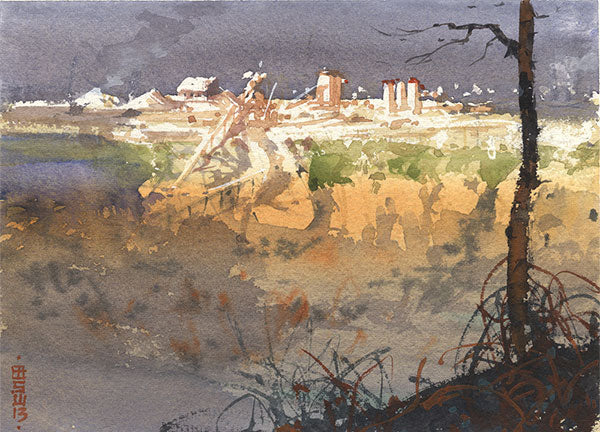
About the Plein Air Watercolor Artist
Baltimore artist Stewart White (“Painting Architecture in Watercolor”) began his studies at the Pratt Institute, but after serving 3 years in the US Army, he returned to graduate from UC Berkeley with a BFA. He’s worked as an architectural illustrator and designer both of which have added to his deep knowledge of buildings and good design. Stewart, a transparent watercolorist, paints plein air and teaches workshops across the country and the world.
- To learn more about how watercolorist Stewart White works, check out his video, “Painting Architecture in Watercolor” at PaintTube.tv.
- Visit his website at stewartwhitestudios.com.
- Listen to his interview with Eric Rhoads on Plein Air Podcast Episode 76.
Visit EricRhoads.com to find out all the amazing opportunities for artists through Streamline Publishing, including:
– Online art conferences such as Plein Air Live
– New video workshops for artists
– Incredible art retreats
– Educational and fun art conventions, and much more.
> Subscribe to Plein Air Today, a free newsletter for artists
> Subscribe to PleinAir Magazine so you never miss an issue


